|
|
Greetings!
Summer is in full swing and around the center, that means it’s field season. We have several missions happening, including our annual survey efforts. In fact, our bottom long line survey was highlighted in a recent episode of Dive In with NOAA Fisheries.
We conducted a mission to look for the presence of Oculina varicosa coral in a section of the Oculina Habitat Area of Particular Concern off the east coast of Florida. Oculina is usually found in depths of 50 meters or more and is the foundation that supports a diverse community of invertebrates and fishes. This survey was conducted on R/V Weatherbird II and used a towed camera system operated by Marine Applied Research and Exploration (MARE). The mission goal was to provide a visual evaluation of bottom features along the eastern boundary of the area which is under consideration for reopening to trawling. Our team was able to complete approximately 35 kilometers of transects, despite sea conditions that they described as the most challenging they’ve ever worked in, but did not see any Oculina.
You may have also seen the recent announcement about proposed Wind Energy Areas in the Gulf of Mexico. I’m proud to say that our team contributed to the NOAA science, data and expertise on fisheries and protected species that were instrumental in helping BOEM identify these proposed locations. As a reminder, a 30-day public comment period is open now.
We continue to highlight more of our fantastic team at the science center. Read more below about some of our staff as part of the Faces of the Southeast Science Center web series.
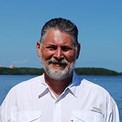 |
|
Thanks for your continued support and interest,
Clay Porch, Ph.D
Southeast Fisheries Science Center Director
clay.porch@noaa.gov
|
|
|
Bottlenose Dolphins Along the East Coast Proposed to be a Different Species

A recent collaborative study proposed that common bottlenose dolphins inhabiting nearshore coastal and estuarine waters between New York and Florida are likely a separate species from their offshore counterparts. They are more closely related to other coastal populations in the Caribbean and Gulf of Mexico than their neighboring offshore common bottlenose dolphins.
|
Community Workshops Help Scientists Cast a Wider Net
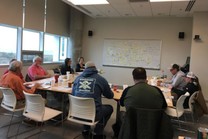
In 2020 and 2021, NOAA’s Southeast Fisheries Science Center worked with the South Atlantic Fishery Management Council to better understand the dolphinfish and wahoo fisheries in the Southeast. They held workshops in three fishing communities to learn about the physical, biological, social, economic and institutional aspects of the fisheries.
|
“Climate Change at the Water’s Edge”: Understanding Impacts of Black Mangroves on Juvenile Shrimp
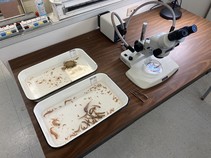
Climate change is transforming estuaries along the Gulf Coast. These changes may impact shrimp that reside in estuarine habitats, like salt marsh, oyster reefs, and seagrass beds. However, the types of emergent vegetation in some estuarine habitats are starting to shift from salt marsh to black mangrove in many areas of the Gulf coast due to climate change. We are working to uncover how this may affect the shrimp fishery in the years to come.
|
Scientists Confirm Link Between Red Tides and Low Oxygen Areas

Scientists have been studying red tides, or harmful algal blooms, on the west coast of Florida. They have now been able to connect these events with low- or no-oxygen conditions, called hypoxia. A recent study found that when red tides began in early summer and continued into the fall, hypoxic conditions were more likely to also occur.
|
NOAA Releases 85 Florida Loggerhead Sea Turtles into the Wild
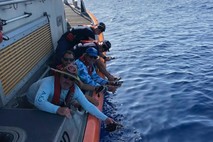
NOAA Fisheries scientists and the Florida Fish and Wildlife Conservation Commission released 85 loggerhead sea turtles into the ocean off Florida’s east coast. The turtles were raised in captivity as part of a one-of-a-kind program. It tests the success of devices used during commercial fishing operations to reduce sea turtle bycatch and mortality.
|
Celebrating 30 Years of Observations on the Water
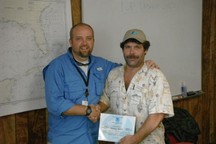
In 30 years and nearly 40,000 days at sea, the Southeast Fisheries Science Center’s Pelagic Observer Program has worked with crews on 275 fishing vessels to better manage fisheries in the Northwestern Atlantic. The data they collect contributes to making informed decisions on how to best manage these fisheries.
|
|
|
Meet Jade Chau, IT Specialist-Data Management Analyst
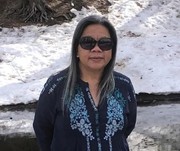 |
|
Jade was hired to help a growing Vietnamese fishing community in southeastern Louisiana. Initially, she was interpreting and translating NOAA Fisheries meetings, rules, and materials from English to Vietnamese and vice versa. Now she is responsible for processing and managing commercial fisheries data from North Carolina to Texas into the Accumulated Landing System. Meet Jade. |
Meet Rachel Eckley, Research Associate
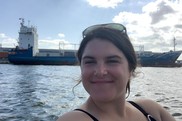 |
|
Rachel organizes our Caribbean strategic planning project, which aims to improve data limitations of the U.S. Caribbean region for stock assessment and ecosystem-based fisheries management. She has also been developing an inventory for the U.S. Caribbean to help classify the currently available data and identify potential data gaps and areas for improvement. Meet Rachel. |
Meet Brendan Turley, Assistant Scientist
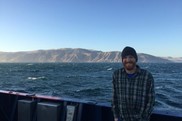 |
|
Brendan is part of the team that works on the Gulf of Mexico Integrated Ecosystem Assessment program. He frequently works with fisheries biologists, physical oceanographers, social scientists, economists, plus commercial and recreational fishermen to implement a cutting-edge ecosystem-based fisheries management system in the region. Meet Brendan. |
Meet Derke Snodgrass, Fishery Biologist
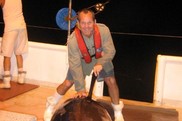 |
|
Derke helps run the Cooperative Tagging Program, a constituent-based program that has been running since 1954. The tagging program makes fish tags available to the fishing public and tournament operators, so that anyone interested in volunteering can help us tag—and sometimes recapture—these fish. Meet Derke. |
Meet Suzana Blake, Environmental Anthropologist
 |
|
Suzana works to provide fisheries managers with the science and tools that assist in managing coastal ecosystems. For example, she has collected oral histories from fishermen affected by red tides, which expanded our understanding of where and when these events occurred. Meet Suzana. |
|
|
|
The mission of NOAA's Southeast Fisheries Science Center is to provide the scientific advice and data needed to effectively manage the living marine resources of the Southeast region and Atlantic high seas.
Visit our website
|
|
|
|